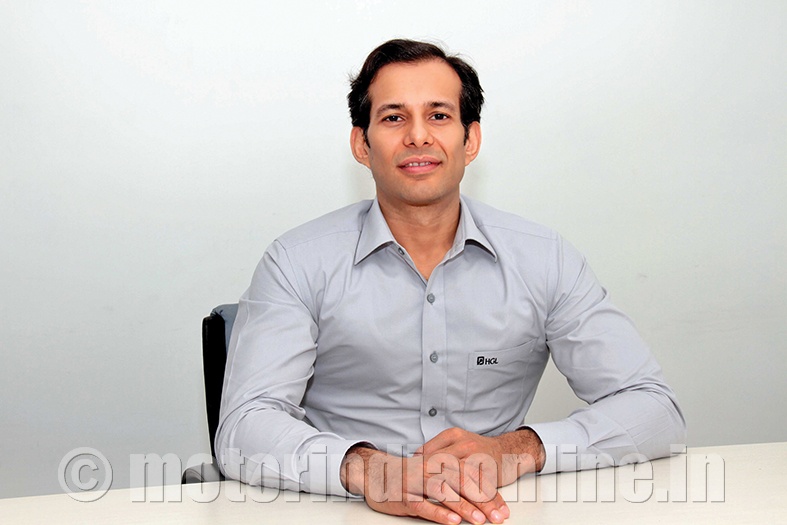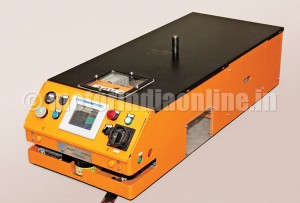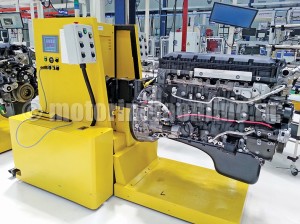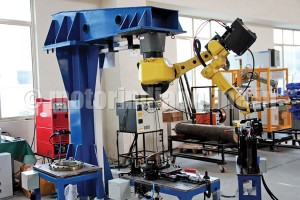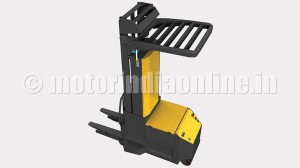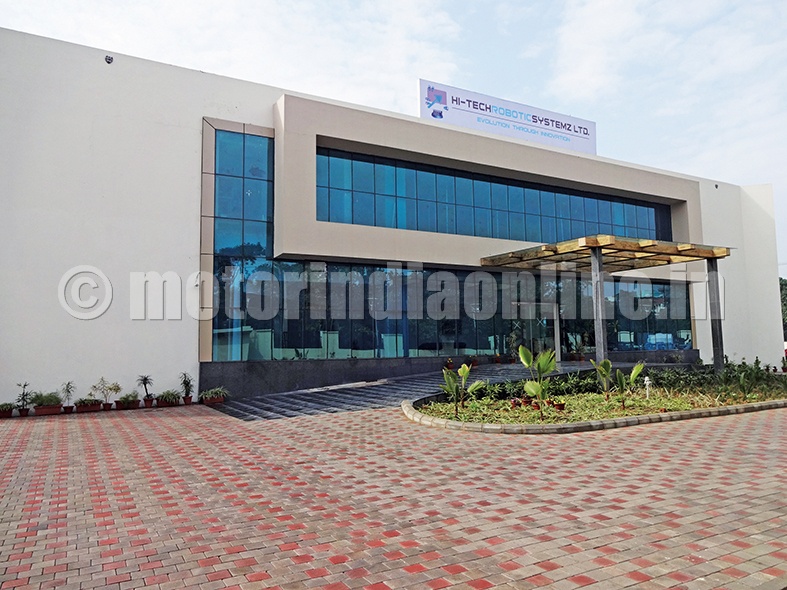It’s not very common for an Indian company to take on global competition head on, that too on the technology front. However, India does have its own share of world-leading entrepreneurs who have floated companies that have risen to the top, not just within the country but also at the global level. The Hi-Tech Robotic Systemz (HRS), the brainchild of Mr. Anuj Kapuria, is a perfect example of what results when passion meets profession. We find out about the journey of HRS thus far and the road ahead, in an exclusive interaction with Mr. Kapuria.
Currently the Managing Director of The Hi-Tech Robotic Systemz, Mr. Kapuria had completed his Masters at the prestigious Carnegie Mellon University in Pittsburgh, USA, and returned to India to pursue his ambition of starting his own company. HRS, established in 2004, is today the only home-grown Automated Guided Vehicle (AGV) manufacturer in the country, offering technology-intensive solutions for the manufacturing sector, including the automotive segment, as well industrial and defence applications.
When asked about his passion for robots and as to what gave him the confidence to take on global competition in the field, Mr. Kapuria says: “Seeing robots move around was really exciting for me, which is why I decided to focus on mobile robotics. From a confidence standpoint, there was never a question. We believe we are clearly ahead of other AGV companies because our DNA comes from the disruptive paradigm of driverless vehicles as against the conventional AGV technique of making robots move from point A to B. Our success lies in the fact that we are ranked in the top one per cent of all robotics companies in the world right now, as we help enable Industry 4.0 and smart factories through our solutions.”
Enter AIVs
Built on its core strength, the concept of driverless vehicles, HRS is already looking at futuristic solutions called Autonomous Intelligent Vehicles (AIVs), which are considered a generation ahead of AGVs. AIVs come with built-in intelligence and can handle a whole lot of additional operations as compared to conventional AGVs. “We don’t call our bots AGVs any more, we call them AIVs which are the next generation of AGVs. Our technology roadmap includes continually developing newer and more intelligent robots which can handle not only the physical task of moving objects from point A to B but can also help optimize inventory by involving in tasks like scheduling, understanding the kind and quantity of materials to be moved, etc. We call these solutions Lean Material Flow (LMF) robots which come with high levels of intelligence, predictability and consistency, resulting in process efficiency improvement and faster turnaround time, translating into significant cost benefits to the customer”, he explains.
HRS has a wide gamut of products crafted for different applications. Its Non-Process AGV range includes Tuggers which can be tugged to trolley trains and operate based on the pay load to be moved, Tunneling AGVs which go beneath the trolleys and get automatically hitched on to them and Unit Loaders, among vehicles.
The company also offers Process AGVs which facilitate processes to be performed while the AGV is in motion – vehicle assembly in automotive plants being a typical example. Process AGVs are a very efficient replacement for conveyors which are typically inflexible and require heavy investments upfront. “AIVs offer a much better solution than conveyors. Conveyors have a single point of failure which forces the entire line to stop in case of a problem at one point, and also production ramp up is not very easy in the case of conveyors. Both these challenges with respect to point failures and capacity ramp up are easily overcome in AGVs. Overall, we can say AIVs are making conveyors obsolete, and that’s what we are working towards”, he points out.
HRS has over 120 robots functioning at different customer locations at present, a figure which is expected to double by March 2016. It currently has a capacity to produce 250 AGVs annually at its Gurgaon plant where the final assembly, integration and testing of vehicles is done, with all other operations being performed at vendor locations. The company is expanding its capacity to cater to the growing market requirements and aims to reach a 500-unit annual capacity by next year.
Full-service provider
Having built its base on class-leading technology, HRS has backed it up with cost-competitive local production and robust service support, which has enabled it to offer a comprehensive package for customers. Given the fact that its competitors come from beyond the shores, the company considers technology, cost competitiveness and aftersales support as its three key pillars of strength.
“World-class quality in a technology-savvy product, low cost due to local production and strong service and support infrastructure across the country are our three main USPs. We are a full-service provider so our customers who do not have to rely on multiple sources for support at their plant. We work with many system integrators while delivering our solution, but the customer is usually in direct touch with us for any kind of assistance. We do a lot of local sourcing with most of the electronics and software being developed indigenously”, says the MD.
HRS with regional offices in Pune and Chennai provides service back-up for its key customers through resident engineers at the latter’s sites, assuring support within a 24-hour timeframe. The company is working on a system through which it would be able to monitor the health and performance of its AGVs at customer locations remotely from its control centre in Gurgaon. The AGVs are equipped with a wireless device and a central OCU which can generate predictive reports based on customer requirements.
HRS has over 20 patents at present and is committed to research and development. Its Defense robotics division, also its R&D engine, works closely with the DRDO and other Defense bodies, focusing on developing vehicles with latest technology which are then suitably modified for industrial applications.
The automotive sector, where it has a number of customers, including VE Commercial Vehicles, Ford, Toyota and the Rane Group, currently contributes nearly 80 per cent of HRS’ turnover. This could change in the near future, on the back of some interesting developments underway at the company. “We are working some ground-breaking disruptive solutions for warehousing, retail and e-commerce segments. In the next few years, automotive and warehousing might each contribute 50 per cent of our overall business”, Mr. Kapuria reveals.
Going global
HRS has been chosen by Volvo among three global players to supply to its global facilities. In addition, the company has received a number of RFQs from overseas customers, as a result of which it has decided to commence exports this year.
Mr. Kapuria further observes: “We visited Europe and the US last year and have started taking steps on the export front this year. Our first overseas facility will most likely be in the US. We have been long ready in terms of complying with global certifications and standards, and from next year we will get aggressive on exports. We are on par, if not better, in terms of technology with any global player, and at the same time, are less expensive by around 30 per cent, though the figure could be as high as 60 per cent for some products. The international business volume will depend on our strategy to grow because the demand has always been there”.
In the next five years, HRS aims to reach an annual sales mark of 1,000 units and expects its international business to contribute half of it, if not more. The company predicts the domestic market for AGVs to be around 500 vehicles annually in the next three to five years.
“The AGV market in India is likely to explode in the next few years. We have received RFQ from almost every single automotive OEM in the country and everyone is talking about becoming greener, having a smart factory and improving efficiency. We hope some of the larger Tier-I suppliers would adopt our LMF solutions in the near future”, concludes Mr. Kapuria.
